In any SHTF scenario, the chances are you’re going to have to supplement your diet by foraging for quite a while. Whether you’re moving across the country to reach your survival retreat, or looking for something to add a bit of variety to the crops you’re raising, food collected from the land is a huge asset. Even in happier times it’s well worth taking a look at what’s growing around you – it’s easy to find natural sources of food that don’t just save you money; they taste amazing, too.
When you’re trying to keep your diet interesting by foraging, mushrooms are worth their weight in gold. They’re fairly nutritious, and there are loads of ways to cook them – chopped and added to stews, grilled or fried; they’re a great way to add taste and variety. They’re also pretty unique in that wild varieties taste a lot better than cultivated ones. Farmed mushrooms are fine, but compared to wild ones the truth is they’re quite bland. It’s hard to beat a handful of fresh-picked wild mushrooms fried up with bacon.
However, there’s a problem with mushrooms. Many species are safe to eat, and some are delicious. But there are some others that can make you extremely ill, and a few are lethal. The standard taste test for identifying toxic plants doesn’t work on fungi either because they’re not actually plants – they’re a separate class of living thing, neither plant nor animal. The only way to tell if a fungus is a safe mushroom or a poisonous toadstool is to identify its species by looking at it. Get it wrong and you can have a real problem – there’s no treatment or antidote for some toxic fungi.
It’s easiest to identify fungi when they’re fresh. Mushrooms grow quickly – usually overnight – and don’t last long. Insects and small animals quickly eat them, often removing identifying features. Even rain or wind can wipe away some useful clues to what species you’re looking at. If you plan to collect wild mushrooms, it’s best to do it just after dawn. That way you won’t just be able to identify what you’re picking – you’ll get fresh mushrooms that haven’t been infested with insects.
Mushroom hunting can be very productive. There are several thousand species in North America, many of them very common. Most mushrooms that grow in the USA are edible, but a lot of them don’t taste great and some can be fibrous and chewy. Many more are too small to be worth collecting. There are a couple of dozen varieties that mushroom hunters focus on, and some of these are rare – they’re prized for their flavor, but you won’t find enough of them to be a worthwhile food source.
On the other hand, some other species are definitely not edible, and about 250 are significantly poisonous. Here are the Top 8 Deadly Plants in the U.S. – That You Need To Avoid.
The worst of them can require a liver transplant, or even kill. Thousands of people a year are poisoned by mushrooms in the USA and a handful die. Just to make things worse some of the most toxic species look very like edible ones, so it’s important to know exactly what you’re doing. To get you started here are some wild mushrooms it’s worth looking for – and some you need to steer clear of.
Edible mushrooms
- Common Mushroom
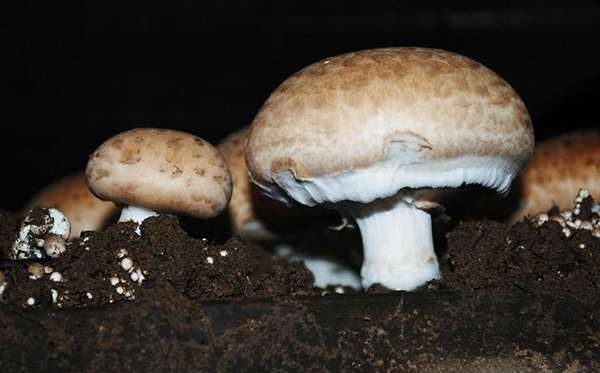
This is a species you’ll definitely be familiar with. To scientists it’s Agaricus bisporus and its English name is the common mushroom, but it has many more. If you’ve eaten Portobello mushrooms they’re just large, mature examples of this one. Anything sold as a Brown Cap, Cremini, Chestnut, Portabellini or Baby Bella mushroom is a smaller, immature one; so are Swiss, Roman or Italian Brown mushrooms.
Common mushrooms are a pale gray-brown color with a cylindrical, thick stem. The gills are pink when it’s immature but slowly darken through red-brown to a dark brown shade. There’s a ring about half way up the stem, which is often streaked on the top side. The flesh inside is white. The cap is a hemisphere when the mushroom is small, but larger ones are more flattened.
Most of the cultivated mushrooms you buy are common mushrooms. Brown and white ones are simply color variations of the same species, and it only shows in immature ones – all fully grown specimens are brown.
The common mushroom is usually found on grassland, and often grows in clusters; like other mushrooms the real organism is a network of underground fibers, and the visible part is a fruiting body. A dense cluster can be a very valuable food source.
- Meadow Mushroom
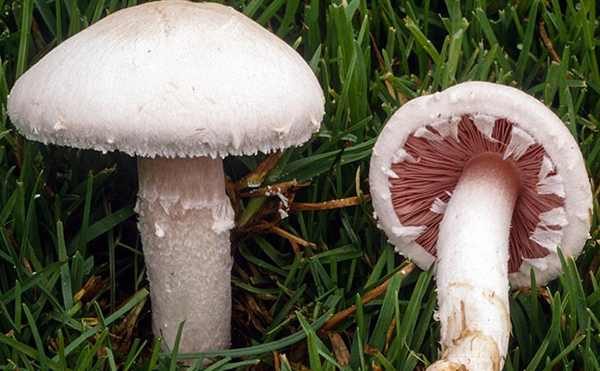
The meadow mushroom, Agaricus campestris, is a close relative of the common mushroom and looks very similar. The main difference is the color – it’s white. In fact, it looks very much like a standard white cultivated mushroom, although it’s a separate species. Like the common mushroom, its gills start off pink, then slowly change to dark brown as it matures.
Again like the common mushroom this species is usually found on grassland, in clusters. If you find what looks like a common or meadow mushroom in a forest be very wary; pay close attention to the color of the gills. If they’re white, don’t eat – or even touch – it.
- Giant Puffball
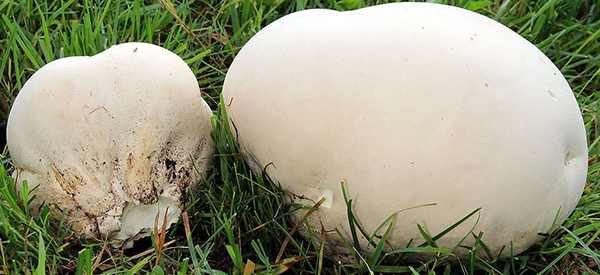
The puffballs are some of the most distinctive mushrooms. They don’t have a stalk and gills like most species; they’re roughly round, although often nowhere close to a sphere. As they mature a spore chamber forms inside, and finally this bursts open and releases up to several trillion tiny spores.
The giant puffball, Calvatia gigantea, is white and often grows to over two feet in diameter – some monsters reach five feet and can weigh over 40 pounds. They take several weeks to grow and are best eaten when they’re immature. The simplest way to test is to slice them in half; if the flesh is white and doesn’t show any internal structure, it’s good to eat. These mushrooms are usually sliced up and fried – they’re delicious cooked in butter or bacon fat.
If you cut open something that looks like a small puffball, and you see a stem and gills inside, discard it; it could be a dangerous species.
Puffballs are versatile and can grow in a range of places. They’re most often found in meadows, fields or deciduous forests.
- Chanterelle
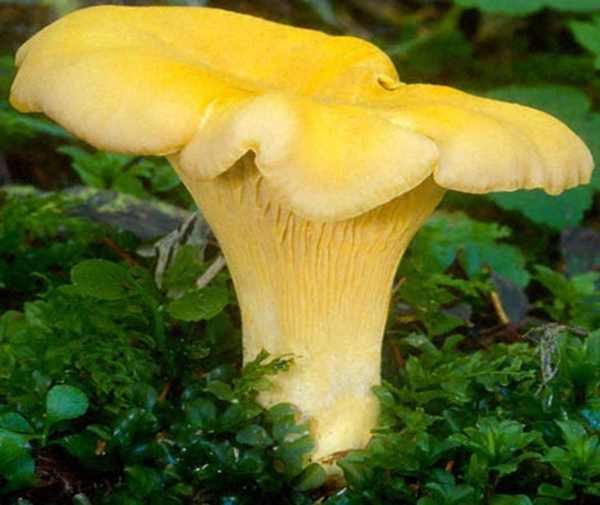
This is another distinctive species. Cantharellus cibarius, better known as the chanterelle, is a fairly common mushroom and also one of the most highly prized edible ones. It’s an excellent source of potassium and vitamins C and D, so adding these to your diet is very useful.
The chanterelle is a yellow or orange color and is funnel-shaped, with yellow ridges running down the outside of the cap. The edges of the cap often curl downwards. Look out for any that have a darker center; there are probably the False Chanterelle, which isn’t toxic but doesn’t taste very good and can cause stomach upsets. True chanterelles have a uniform color.
Chanterelles grow in open woodland, so look for them in places where there isn’t a lot of undergrowth. They often grow in clusters.
- Morel
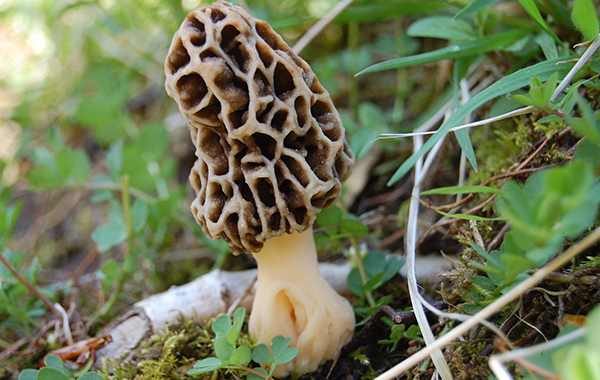
The morel is another mushroom that’s very popular with gourmets. The name gets applied to a genus (Morchella) of closely related species, which also have a wide variety of local names; in West Virginia they’re often called Molly Moochers or Muggins, but Kentucky has come up with the colorful name of Hickory Chicken.
Morels don’t look very appetizing. They have a pale brown to white cylindrical stem, similar to a regular mushroom, but the brown cap is very different. It’s tall and slim, and has a spongy look – the surface is wrinkled and pitted, so it looks like it’s honeycombed with holes. Don’t worry about the appearance, though – these mushrooms are delicious.
Beware of false morels; these are toxic, and in large quantities can cause loss of muscle coordination. As this can also affect heart muscle they’re dangerous. The cap of a false morel looks more wrinkled, like the surface of a brain, while true morels have the classic honeycomb look. If you’re in any doubt cut the stem in half. True morels have a hollow stem, but in false morels, it’s filled with something that looks like cotton balls.
Morels are woodland mushrooms and seem to have a close relationship with trees. In the western USA you’re most likely to find them in coniferous forests; further, east they often grow under ash, cottonwood, apple trees, and dead or dying elms.
Non-Edible Mushrooms
- Death Cap
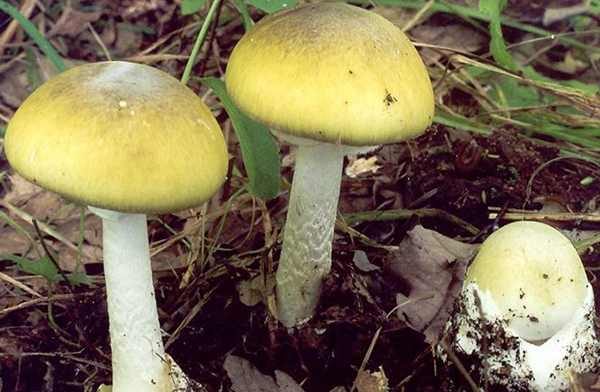
The name of this mushroom should warn you that it’s bad news – and it is. The Death Cap, Amanita phalloides, is one of the most poisonous known fungi; half a mushroom is enough to kill an adult. The toxins they contain are temperature-stable, so can’t be destroyed by cooking, and are also dangerous if absorbed through the skin. Once poisoned treatment is very difficult; the toxin attacks the liver, and sometimes a transplant is necessary. Over half of all mushroom fatalities worldwide involve death caps; this is a formidable record, as it’s only native to Europe. It’s believed that spores came to the USA in imported chestnut trees and it’s also now found in Australia, southern Africa and parts of South America.
People who’ve eaten death caps say they have a pleasant taste. That, and the fact that no symptoms appear until several days after eating it, mean people often eat large quantities before becoming ill. It also looks a lot like several edible species, including the Caesar’s and Straw mushrooms.
The death cap has a white stem and a pale olive cap with the classic mushroom shape – hemispherical when young, turning to flat and broad – up to six inches wide – as it matures. Immature ones can be mistaken for common or meadow mushrooms. One way to tell is to check the gills – the death caps are white. Another feature of the death cap is that the young mushroom grows in a white sac called the vulva. When it first emerges from the ground it looks like a small puffball, but as it grows the sac tears open to reveal the mushroom. Part of this usually remains round the stem, where it can resemble the ring on an edible mushroom. Other pieces of it often stick to the cap. The white-spotted red toadstool seen in many illustrations is a relative of the death cap, and the spots are actually pieces of the vulva.
Death caps usually appear in late summer and fall and are found in woodland. This can help tell them apart from common and meadow mushrooms, which are grassland species.
Several historical figures are believed to have been killed by death caps, either accidentally or through assassination. They include the Roman emperor Claudius and Charles VI of the Holy Roman Empire.
- Destroying Angel
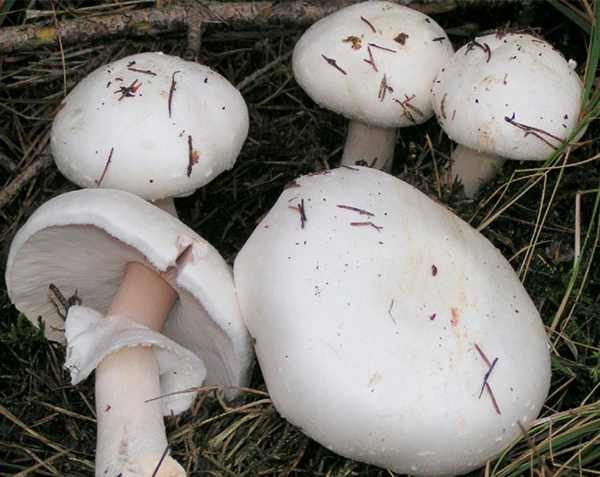
Like the death cap and many others of the most toxic fungi, the several species of Destroying Angel are members of the genus Amanita. Some Amanita species are edible but most mushroom experts advise avoiding them all on principle – the genus kills 95% of all mushroom victims. The destroying angels are just as toxic as the better-known death cap and look very like them apart from their color. The dominant color is white, which makes them visually similar to cultivated mushrooms; a young destroying angel looks very like a button mushroom.
There are at least five species of destroying angel native to North America, and their ranges overlap to cover the entire USA. All are medium to large mushrooms. When mature they can be more than six inches high and five inches across the cap. Sometimes either the stem or cap is tinged with pink, tan or yellow. The most reliable way to tell them apart from edible species is to check the gills, which are white.
Destroying angels are woodland mushrooms and are usually found near the edge of forests. They can also appear on the grass near trees or large bushes – fungus filaments can run several yards out from the roots of the tree, and the mushrooms grow from these.
- Fly Agaric
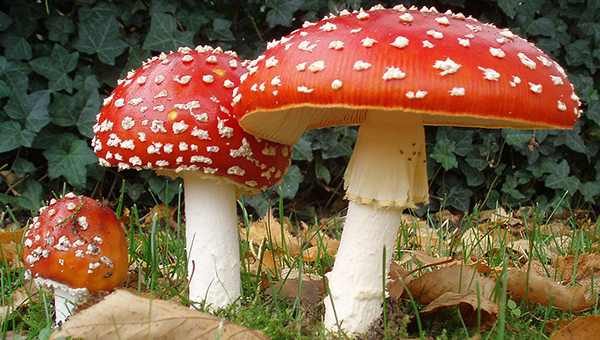
Amanita muscaria is the classic toadstool. A relatively less poisonous member of the Amanita group, it’s sometimes eaten as a hallucinogen – but it’s still dangerous, and it has caused deaths.
Fly agaric is a large mushroom, reaching up to eight inches across, that’s found in woodland across the entire USA. It’s also immediately recognizable. The stem is white, with a skirt or false ring created by the remains of the vulva. The cap is usually bright red, although brown varieties exist. It’s covered with small white warts; these are pieces of the vulva which stuck to the cap as the mushroom emerged from its covering. Heavy rain can wash them off, leaving yellowish spots in their place.
Some sources say that fly agaric can be made less toxic by parboiling or drying, but this is not a safe or reliable thing to do. Even prepared, this mushroom can cause serious illness and hallucinations. Avoid it.
- False Parasol
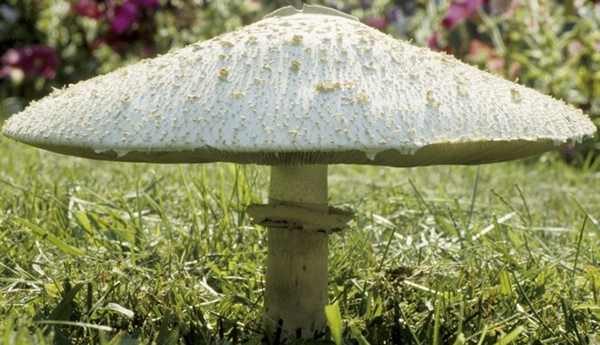
Chlorophyllum molybdites, usually known as the False Parasol, Green-Spored Parasol or Greengills, isn’t as dangerous as the Amanita varieties, but it’s the most commonly eaten poisonous mushroom in North America – and definitely nasty enough to make you wish you’d avoided it.
The false parasol is a large mushroom, growing up to a foot tall and 16 inches in diameter. The cap is shaped like a flattened cone, is a whitish color and has rough brown scales. The stem is cylindrical and has a prominent ring. The gills are white when immature, slowly turning dark green with age.
Most poisonings from the false parasol happen when people mistake it for a parasol mushroom. In a true parasol the gills are white, sometimes shading to pink; if you see a green color on the gills, avoid it. True parasols also have a snakeskin pattern on the cap under the scales; the cap of the false parasol is smooth.
One to three hours after eating this mushroom, severe symptoms appear. These usually include stomach pain, diarrhea, and vomiting. So far there have been no known deaths, but it can be bad enough to take you out of action for a few days.
- Sulfur Tuft
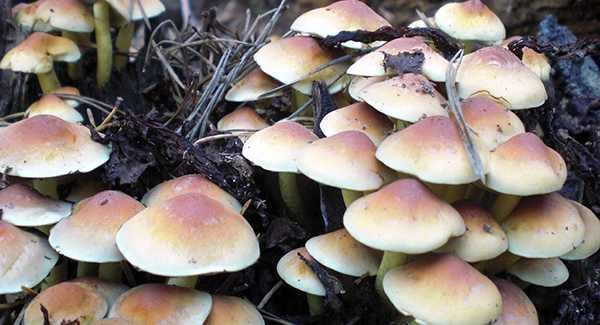
This common mushroom grows in forests, usually around fallen trees or decaying stumps. It’s often the only mushroom to be found, which tempts people to try it. The taste is very bitter raw, but the bitterness disappears after cooking. Unfortunately, the toxicity doesn’t, so it still isn’t safe to eat.
The sulfur tuft, also known as the Clustered Woodlover, can be up to five inches tall and 2.5 inches in diameter. The stem is light yellow to orange-brown, with a faint ring; the cap is hemispherical or conical, orange-brown in the middle with pale edges. The gills are yellow when young but darken to green. This mushroom usually grows in dense clusters.
If eaten, symptoms usually appear five to ten hours later and can be severe. Diarrhea, nausea, and vomiting are the most common. Many victims also collapse, or suffer from paralysis and vision problems. Symptoms take several days to clear up. There has also been one suspected death.
For more information about how to procure food when SHTF you can also watch this video. I hope you found this information useful.
This guide hardly scratches the surface of the mushrooms you might find, but it does cover the most common and useful edible ones – and the ones you really need to avoid. The main rule is to NEVER eat a mushroom you can’t positively identify as being a safe species. If there’s any doubt at all, leave it. After a few days of heavy rain, it can be difficult to tell a young death cap from a young meadow mushroom, and confusion can be lethal. Start by spotting and identifying mushrooms – and do it now, while you have access to the internet to research the ones you find. Take photos and use them to help you work out what species they are. Only start collecting – and even handling – actual mushrooms when you’re 100% sure they’re edible. There are risks in messing around with wild fungi, but if you get it right you’ll have access to a valuable food resource.
You may also like:
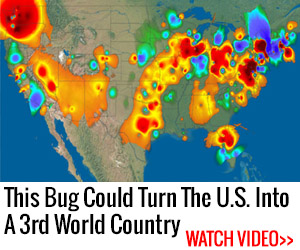 You Pass by This Plant Everyday Without Knowing How to Use It When SHTF
You Pass by This Plant Everyday Without Knowing How to Use It When SHTF
H2O Dynamo – The Awesome Device That Turns Air Into Fresh Water! (video)
22 Ingenious Hacks to Make Food Last Longer

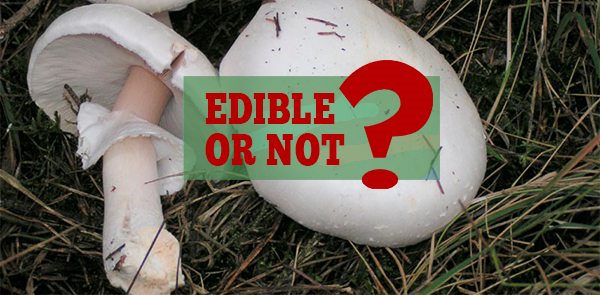














Thanks for the Details on mushrooms, keep up the Great Job
What you’re calling a puff ball is better known (at least in The South) by the name of “devil’s snuff box”. We used to stomp them when I was a kid and they were full of spores and get a great big green cloud of spores for our efforts.